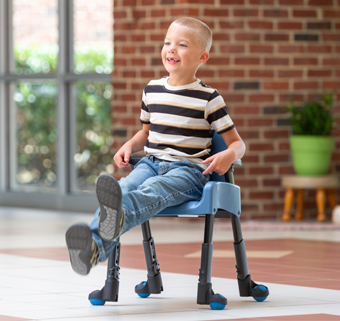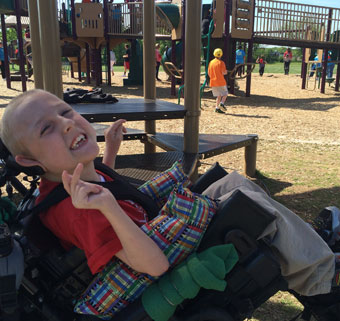Teaching Children with Autism in the Classroom
| January 2012Contributed by: Denise Keene who has been a Special Ed teacher for 15 years.
 All children in special education classes are introduced to the same subjects that are taught in the regular class: math, reading, writing, science, etc. However, because they have different needs, new concepts may be introduced at a slower pace. For example, most children learn to read a short book by the end of kindergarten, but children in special needs classes may not learn to read a short book until the middle of first grade or later.
All children in special education classes are introduced to the same subjects that are taught in the regular class: math, reading, writing, science, etc. However, because they have different needs, new concepts may be introduced at a slower pace. For example, most children learn to read a short book by the end of kindergarten, but children in special needs classes may not learn to read a short book until the middle of first grade or later.
In addition to teaching new concepts at a different pace, special education teachers also use different teaching techniques in accordance with the student’s individual needs. Autism is an especially important disorder that requires a very specific plan for teaching. Because there are different severities of autism, there are several different techniques that can be applied in special education.
The following is a list of tips for teaching children with autism. In compiling this list I have drawn heavily from a widely used synopsis originally written in 1996 by Dr. Temple Grandin, a writer and lecturer who was diagnosed with autism at age four. Dr. Grandin’s complete list of teaching tips can be found here.
Autism Classroom Strategies, Management & Tips:
- Children with autism need structure: This may seem like common sense, because all children need structure. However, children with autism need a more rigid structure in the classroom; they work best on a very strict schedule. Although a young child with autism may not yet know how to tell time, they definitely recognize patterns in their day and know when something is amiss. Any inconsistency in their day-to-day schedule can shake their confidence and even create anger or fear. For this reason teachers must keep a very set schedule. If there is any change up in the schedule, the teacher must take at least 20 minutes to “warm up” the student to the new event or task.
- Children with autism are visual thinkers, and they learn through touch: If you want your student to learn a new number, for example, you would want to use a tool that your student could hold and look at. So, if you are teaching the number 4, you would need a card or a block that showed the written number 4 and a drawing of four objects (like four elephants). Children with autism learn when they are allowed to interact with the teaching tool, so anything that is visually appealing and can be picked up or touched will be the most effective. This is why the new iPad applications for teaching autism are so great.
- Avoid giving long verbal directions: If the child can read, write the directions down in large letters and place them on their desk. If the student hasn’t learned to read yet, avoid activities that require multiple steps. Use new technologies, like the iPad or other computer games
- Guide them: If you are teaching a new skill (like shoe tying), hold the student’s hands and guide them through the process.
- Don’t ignore their talents: If the student shows an interest in art or computers, allow them at least one hour of class time to practice this interest. Better yet, allow them to practice their talents with the teachers who teach these subjects at your school.
One of the most important things for a special education teacher to remember is that you should always practice patience with your students. It may take some time for your student to learn a new concept, and there will be struggle with participation sometimes, however when you remain patient and practice these tips and strategies for autism in the classroom, good things will happen- often when least expected.
Please visit Masters in Special Education for additional helpful information on teaching special education.




